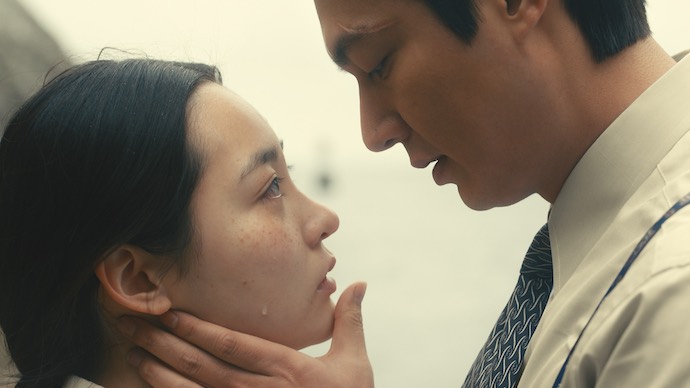With the 21st century’s advent of online streaming, viewers around the world suddenly gained easy access to hundreds of excellent TV series that have been produced by South Korea—and people started to see for themselves just how good those TV series were. K-drama is no longer a delight only enjoyed by Eastern viewers. It’s now a supergenre that holds the attention of a worldwide, multinational audience with its fun escapades and uniquely told stories. But what is it about K-drama shows that make them so popular, not just in the East but also with Western English-speaking viewers who are more used to watching HBO, BBC, and NBC style shows? Here are the main reasons why Korean TV series are at the forefront of TV culture and why K-drama shows are so special.
1. Extended Runtimes & Episode Counts
The modern standard for Western drama TV series sits somewhere around 8 to 12 episodes per season, with each episode having a runtime of approximately 45 to 60 minutes. That pales in comparison to Korean drama TV series, which typically run for around 16 to 20 episodes, with each episode having a runtime of approximately 60 to 90 minutes. The sheer amount of story and entertainment that you can get from a single K-drama dwarfs what you can get from a Western series, which is essentially half of what a typical Korean series brings. In today’s age of streaming, people are continuously looking for more. They want deeper stories that offer both quality and quantity. They want to be hooked and entertained for a long time, and they want to be fully absorbed into a story with many characters. For the most part, binge-watching just isn’t good enough anymore. A season of Western TV is easy to burn through on a weekend, but what next? Wait another year for the next season to drop? In the meantime, a series so quickly consumed is also easy to forget about. Anybody mad enough to attempt a weekend binge-watch with K-drama will lose much more than sleep. There’s just too much to take in, too much content to watch unless you give up literally everything else.
2. Multilayered Stories & Genre Blending
Story is always the foremost aspect of filmmaking in any form, and in this respect, K-drama shows have perfected what it means to have rich, multilayered yarns that twist in ways you won’t see coming. To make that happen, K-drama often blends various genres to create a deeper, more committed story—and all of the best K-drama series have expansive casts served by the central narrative. Not that this isn’t also found in Western shows, but Korean shows capably stretch it out across many more hours. That means audiences have longer to live with the characters and experience their worlds, to know them inside and out and all but become part of their lives. Netflix’s Hometown Cha-Cha-Cha, for example, has a central love triangle that plays out in the lives of the townsfolk around them—but it’s the exploration of the town’s inhabitants that truly round out the story and prevent the central characters from becoming mundane. Each side character has a rich backstory that feels emotionally resonant, forging a tangible level of connection between viewer and characters.
3. Booming Interest in Korean Culture
Since the late-1990s and early-2000s, Korean culture has grown into a subject of note in the West thanks to the internet and greater access to all the different media formats coming from the country. First, it started with cinema. Film is usually the first cultural work that finds its way out of a country and plays before an international audience. Classic movies like Oldboy and I Saw the Devil piqued the interests of cinephiles, who started focusing on Korean filmmakers. Now, Korean cinema has become influential worldwide and even serves as a hub for auteur filmmakers, led by names like Bong Joon-ho and Park Chan-wook, who have made some of the best movies of our time. Alongside the growing popularity of Korean cinema also came a growing interest in Korean music. The boyband BTS, for instance, has become a worldwide phenomenon that now books tours around the globe, in countries that have no idea how to say a single word in Korean. Korean TV series are merely the next step. As with film and music, Korean television has made its voyage across the sea to the US and Europe, almost feeling like a precious animal taken from its homeland for display in a museum—except now we can stream it with a click.
4. Growing Acceptance of Subtitles
One huge factor in the rise of popularity in Korean TV—and films and TV shows from around the world—is the normalization of subtitles. What began as an aid for the hearing-impaired is now normal fare. Recent studies amongst young viewers indicate that they watch movies and TV shows with subtitles enabled even when they’re watching in their own language. It’s no surprise that such viewers would be more open to watching foreign-language content without much bother. This used to be a huge barrier for foreign-language creators, who had trouble convincing Western audiences to accept subtitles. Now that subtitles are seen as acceptable, that huge barrier is crumbling—and people are willing to engage with non-English shows. This trend has even influenced Western TV shows. For example, Apple TV+’s new series Pachinko, starring Academy Award-winning actress Youn Yuh-jung, has garnered critical acclaim in the West despite its dialogue mainly spoken in Japanese and Korean. So it’s really no surprise that K-drama has boomed in the West. With the barrier of subtitles out of the way, people are willing to dip their toes in the waters of Korean TV—and once they see how good it can be, they want more of it. Read next: The best foreign-language Netflix Original series









